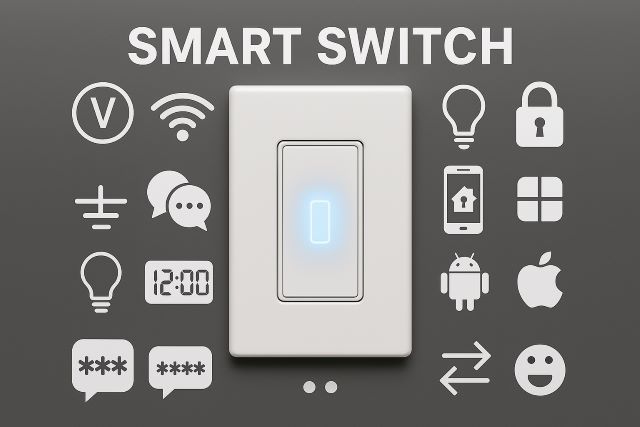Back To Articles

Claim your free trials here and enjoy immersive content experiences at home.
Contents
- 1 Do Smart Switches Use More Electricity? A Detailed Guide
- 2 Do Smart Switches Use Electricity When Off?
- 3 Smart Switch Power Consumption Explained
- 4 Are Smart Switches Energy Efficient?
- 5 Do Smart Switches Use More Electricity Than Regular Switches?
- 6 Benefits and Drawbacks of Smart Switches
- 7 Tips to Maximize Energy Savings
- 8 Final Verdict
Do Smart Switches Use More Electricity? A Detailed Guide
Smart home devices are rapidly becoming part of modern households, with more than 300 million smart homes expected worldwide by 2026 (Statista). While convenience is often the main selling point, many homeowners still ask a crucial question: Do smart switches use more electricity than traditional ones? This question matters because every small wattage adds up over months of usage. In this guide, we’ll break down exactly how much power smart switches consume, whether they waste electricity when idle, and how energy-efficient they are compared to regular switches. By the end, you’ll know whether installing smart switches is a step toward saving energy — or simply adding another device to your utility bill.
Do Smart Switches Use Electricity When Off?
Yes, smart switches consume a tiny standby current even when the connected light or appliance is off. Most models draw around 0.3–1 watt per hour to keep their Wi-Fi and sensors active. Over a month, this equals less than 1 kWh, which costs only a few cents in most regions. In other words, while they technically do “use electricity when off,” the amount is negligible compared to the energy savings you can gain from automation.
Smart Switch Power Consumption Explained
-
Idle mode (Wi-Fi connected): ~0.3–1W
-
Active switching: ~1–2W momentarily
-
Annual usage per switch: 3–5 kWh
For comparison, an LED bulb can consume 60–100 kWh annually depending on usage. Clearly, the switch itself is not a major contributor to your electric bill.
Are Smart Switches Energy Efficient?
Yes — but not because of their internal power draw. Their real efficiency comes from automation features such as:
-
Scheduling lights to turn off automatically.
-
Motion sensors that prevent wasted lighting.
-
Remote control (turning off devices left on).
These savings often outweigh the minimal electricity they consume in standby. For example, the U.S. Department of Energy notes that automated lighting can reduce household electricity use by up to 30%.
Do Smart Switches Use More Electricity Than Regular Switches?
Technically yes, since regular switches use zero standby power. However, the difference is so small it’s practically irrelevant: less than $1 per year per switch in most homes. The bigger impact comes from how smart you are with automation settings.
Benefits and Drawbacks of Smart Switches
Pros:
-
Save energy through automation.
-
Enhance convenience (remote control, schedules).
-
Improve safety with vacation mode (lights on/off when away).
Cons:
-
Slight standby consumption.
-
Higher upfront cost.
-
Requires Wi-Fi stability.
Tips to Maximize Energy Savings
-
Use schedules for lights and appliances.
-
Combine with LED bulbs for maximum efficiency.
-
Group switches into scenes (e.g., “All Off” before bedtime).
-
Disable unused features like constant status updates.
Final Verdict
So, do smart switches use more electricity? Yes, but insignificantly. The minimal standby power they draw is outweighed by the larger savings from reduced lighting waste and improved control. If you want to cut costs, pairing smart switches with energy-efficient bulbs and smart habits will give you the best results.
